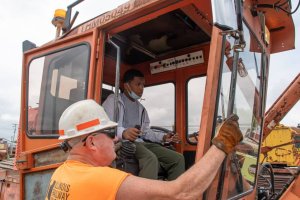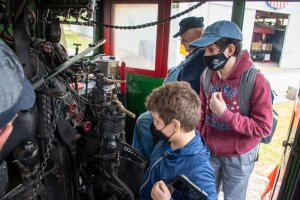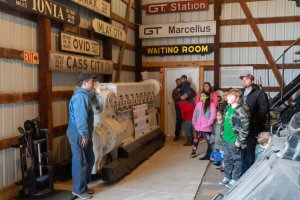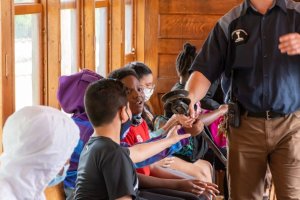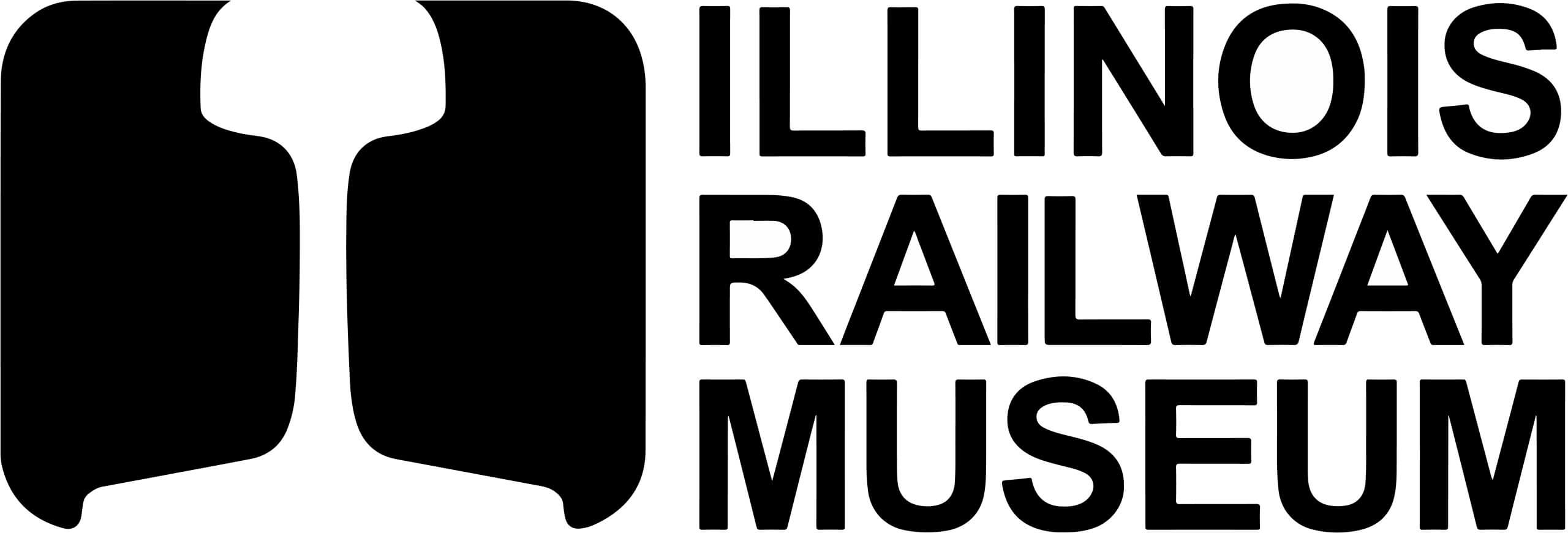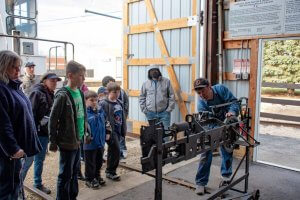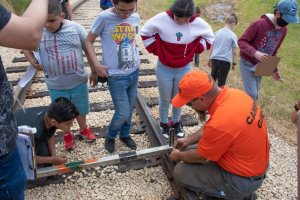School Groups
Education is central to the mission of the Illinois Railway Museum. During the spring and fall we welcome school groups, field trips, vocational classes, and other kinds of educational organizations. On our 100-acre campus, we can offer students and participants an array of unforgettable hands-on and immersive experiences.
- Tour guides, with various available tours and educational modules
- Hands-on experiences and instruction in railroad-related subjects
- Instruction on railroad operations from professional railroad employees
- And, of course, train rides on our demonstration railroad
Interested in bringing your class or school group to IRM for a unique and interactive experience? Contact us here or at the bottom of this page.
History
The primary mission of IRM is to educate our visitors about the history of rail transportation. Modern America was built by railroads, starting from the earliest railroads over the Appalachian Mountains in the 1840s to the Transcontinental Railroad in the 1860s that knitted the country together. Chicago was the railroad capital of the nation. It served as a railroad gateway between east and west, a major transfer point for transcontinental passengers and freight, and as the location where water-borne transportation from the Atlantic and the northeast gave way to rail-borne transportation to the Great Plains and Rockies.
As the largest railway museum in the country, IRM is uniquely positioned to tell this story of how America spread westward thanks in large part to the train. There are countless stories we can tell through the artifacts in our collection:
- How railroads helped advance world-changing innovations like the steam engine, telegraph, and electric power generation
- How the Homestead Act and access to rapid rail transportation of grain and livestock enabled the settlement of the vast prairies of the Midwest and west
- How refrigerated railroad cars permitted consolidation of meat packing facilities, leading to Chicago becoming the famed "hog butcher to the world"
- How the development of the streetcar allowed people to work beyond walking distance from home, leading to the explosive growth of cities like Chicago
- How workers for companies like Pullman, based in Chicago, were among the earliest and most active leaders in the late-19th century labor movement
- How the mid-20th century transition from public transportation to vastly expanded automobile usage led to the world we live in today
...and many more! Learn all about America's history on steel wheels at the Illinois Railway Museum.
STEM/STEAM
Rarely does an industry better encapsulate the STEAM disciplines than railroading. Railroads through history have employed science, technology, engineering, art, and mathematics extensively. At IRM, we are excited to help educate the next generation of learners by utilizing the varied aspects of railroad design, construction, maintenance, and operations as a lens through which a variety of lessons can be taught. Just a few of the STEAM examples you can learn about at our museum:
- The scientific principles that enable a steam locomotive to convert coal and water into steam, and convert steam into immense amounts of power
- The technological advancements that led to machines like the electric motor, internal combustion engine, and multiple-unit control
- The engineering work necessary to construct a railroad, from bridges and tunnels to giant cuts and fills
- The artistry of rail car construction in the golden age, including stained glass work, intricate wood carving, hand-painted decoration, and more
- The vital role of mathematics in railroad construction and maintenance, from the tracks and switches to the overhead trolley wire
STEM/STEAM school groups and vocational classes can enjoy hands-on instruction at IRM taught by railroad industry professionals, including in-depth discussions and exploration of track design and construction, railroad car maintenance, woodwork, welding and metalworking, pressure vessel and boiler maintenance, railroad operations, and more.
